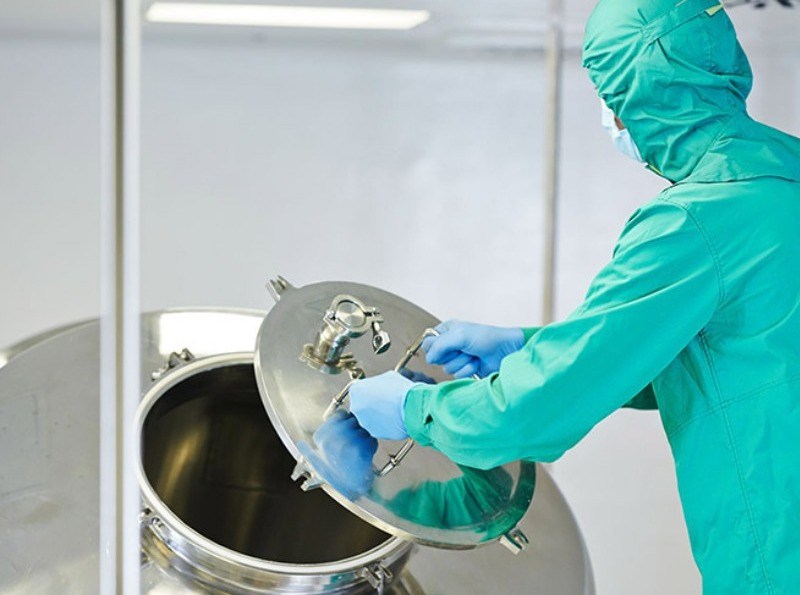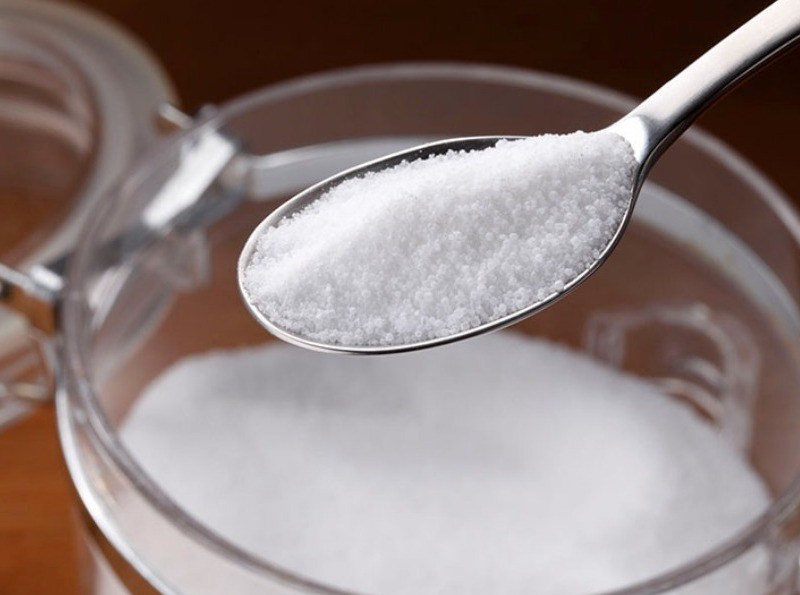Granulation is the process whereby powder forms are bound together to form aggregates, which are called as granules. Granulation is important as it helps prevent the separation of the ingredients in the mixture as well as improves the flow of the properties of the mixture. It also changes the size of the particles resulting to improved compression and density of the powder mix.
Wet Granulation Process in Tablet Manufacturing Guide
In wet granulation, powders are bound together using adhesives rather than by compacting as in the dry granulation process. The adhesive (usually called a binder) is incorporated in the form of a solution or suspension in a suitable liquid. The liquid should be non-toxic and is preferably water, although various other solvents may be considered, such as propan-2-ol and ethanol. These may be used alone or combined with other solvents. The granulation liquid is added to the powder under the influence of an impeller (in a high shear granulator), screws (in a twin screw granulator), or air (in a fluidized bed granulator). Agitation of the particles along with the added liquid produces bonding between the primary powder particles to produce wet granules. The final step of the wet granulation process is the evaporation of the solution, which leaves the original powder particles bound together with the adhesive binder. The granules can be milled to the desired dimensions.
What to Consider when Choosing Granulating Liquids
Solvents
- Organic solvents are a good option for products that are water or moisture sensitive.
- Organic solvents are generally very volatile; so they tend to dry quickly.
- Solvents are more expensive than water.
- Consideration should be given to the cost of the environmentally safe disposal of used solvent on completion of the granulation process.
Aqueous/Water
- Affordable
- Non-flammable
- Environmentally friendly
- May affect adversely the stability of products
- Longer drying times are required compared with organic solvents, and therefore the material will be exposed for longer to abrasion and heat

The Process of Wet Granulation
The process of wet granulation can be very simple or complex depending on the characteristics of the initial powders, the final objective of tablet making, and the equipment that is available. The mechanism of wet granulation begins when liquid is added to the powder, causing wetting of the powder and the formation of a thin and immobile film of liquid between particles. As more liquid is added to the mixture the thin film becomes more substantial and liquid penetrates the pores of the particles by capillary action. This provides the strongest form of adhesion between particles when the solvent is finally evaporated. The particles coalesce and nucleate to form larger and larger granules and the dimensions of the final granules is dependent on many factors including the characteristics of the primary powder, the binder and solvent, and the type of granulator and the mixing time in the granulator.
What Influences the Final Product of Wet Granulation?
The following all influence the characteristics of the final product of wet granulation:
Powders
- Size of particles and their density
- Substrate solubility
- Wettability
Binders
- Amount of binder added
- Method and the rate of addition to the powder (depends on the type of granulator)
- Binders may be in the form of dry powder that may be dissolved or suspended in the granulating liquid
Granulator Type
- Planetary Mixer
- Rapid mixer Granulator
- Fluidized Bed Granulator
Equipment for Achieving the Desired Particle Size
- Wet or dry mill
- Screen/sieve
Drying Equipment
Tray Drying Oven
The traditional tray drying oven is good for drying small batches of granulated material. Operation is manually intensive and it has the disadvantage that liquid is lost primarily from the upper surface of granules that are packed in the trays. This can give rise to granules of non-uniform porosity, density and composition. Drying using a drying oven can also take several hours.
Fluid Bed Dryers
A fluid bed dryer can dry materials much faster than a conventional oven. The powder is fluidized by a stream of warm and dehumidified air that is admitted to the base of the drying chamber and exits the top. A fine mesh prevents particles escaping with the exhausted warm air. Unfortunately fluidization of the particles can lead to loss of material through attrition.
Advantages of Fluid Bed Dryer
- The granulation process is less time consuming and laborious as compared with other wet granulator machines.
- Fast wetting of material, agglomeration and drying is done in one machine
Disadvantages of Fluid Bed Dryer:
- No appropriate powder-mixing component.
- Possibility of demixing caused by different particle sizes and weight.
- Particles that are under granulation may stick to the filter and reduce the latter’s effectiveness causing product loss and increase in cleaning time.
Microwave/Vacuum Dryer
A microwave or vacuum dryer achieves rapid drying of the granules at relatively low temperatures. Like the traditional oven, a microwave oven or vacuum dryer is best for small batches, used in single pot machines. Microwave drying is limited in batch size on account of penetration of radiation. With both methods, however, since the granules are stationary, there is less attrition with a microwave or vacuum dryer, than there is with a fluid bed dryer.
Steam-Jacketed Kettle
Evaporating pans or steam jacketed kettle come under the classification of natural circulation evaporators. The widely used kettle consists of a hemispherical pan surrounded by a steam jacket that heats the pan. The hemispherical shape provides a large surface area for the evaporation of liquid from wet granulated material. Some models are fixed and the product is discharged from a port in the base. In other case the evaporators are mounted in such a way that they can be tilted to remove the product.

Milling
The granulated material can be milled to break down lumps to smaller sizes that can be screened to achieve a required particle size distribution. The aim of milling is to create as uniform a size distribution of particles as possible to aid the flow of material in the tablet making process. Milling is not intended to reducing large sized particles which are best removed by sieving or passing through a screen. There are two forms of milling as applied to granulated materials:
- Wet milling – this is carried out directly after the granulation process and before the dryer.
- Dry milling – this is carried out directly after the dryer.
The Quadro Comil range of conical mills is perhaps one of mills available for the pharmaceutical industry. The Comil mills can be used for wet or dry milling. The impeller in a conical mill is not in contact with the screen used to separate oversized granules, but instead gently pushes the smaller granules through the screen as it rotates.
Notes on the main types of granulator – planetary mixer and rapid mixer granulator
Planetary Mixer
The planetary mixer is used mainly for wet mixing processes. If different dry components are required in the formulation, they are mixed first in a dry mixer. Once the dry powder is mixed, it is fed to the planetary mixer’s bowl and granulating liquid is added as the mixer’s paddle mixes and kneads the powder to form into granules. The mixer is designed with the paddle having a “planetary motion” and design is such that there is a narrow or limited space between the wall and the blade(s) of the mixer.
High Speed Rapid Mixer Granulator
A rapid mixer granulator usually comprises mixing bowl with a bottom entry agitator or impeller for mixing the materials and a side mounted chopper for granulating the mixture. The operating principle is based on agitation of the contents of the bowl at moderate speed and then running the blade of the chopper at high speeds to achieve granulation.
Fluidized Bed Granulator
The fluidized bed granulator has the same design concept as fluidized bed driers. Powder granules are fluidized using streams of air; the difference is that in the granulator liquid is also sprayed from a nozzle into the bed of powder. The liquid may be heated before it is sprayed into the bed of powder.

Steam Kettle Evaporator Process Operation
- The steam kettle must be cleaned as per the company’s standard operating procedure (SOP).
- Before use, cleanliness of the equipment must be checked and recorded by the officer in charge on the Batch Manufacturing Record (BMR).
- Request for line clearance must be completed and documented as per the company SOP.
- The binding material of only one lot at a time should be bought in the preparation area.
- Follow the operation of the steam kettle as per the company SOP.
- Any stainless steel accessories must be cleaned as per the company’s SOP.
- The code number of the stainless steel sieve should be recorded in the BMR.
- The steam kettle should have a status label at all times.
- The binder exhaust should be opened or placed into “ON” during the preparation process.
- The calibration for the steam kettle’s pressure gauge should tested every year.
- If a stirrer is used, ensure that it doesn’t touch the steam kettle’s bottom.
Safety Precautions – During Operation and after Machine Changeover
All granulation machines present operational safety issues. The following are precautions that should be taken when using granulation equipment especially a rapid high shear mixer granulator such as the Saizoner machine supplied by Tapasaya in India.
- The compressed air should not be less than 1.5kg/cm².
- Check and ensure that power to the agitator blade and chopper is off before scraping materials from inside a rapid mixer granulator.
- If changeover should occur, ensure that the PLC, chopper, lifting motor and positioning device is covered with a protective plastic bag.
- The main switch must be off before washing and scraping the granulator.
- During the unloading of wet granules, personnel must not insert their hands in the discharge port.
- Before manual checking, check that the agitator and chopper is not in motion.
- Never bypass safety interlocks when operating the machine.
- Do not touch any moving parts of the machine.
- Do not touch or hold the lid of a rapid or high shear granulator without first locking the rod.
- Always check the bowl for the presence of any unwanted materials.
- Do not insert hands in the discharge port when unloading the materials.
- A 5 micron filter should be inserted in the air vent of the mixer.
- Agitator and chopper should be calibrated every six months.

Granule Lubrication
- After the final drying step in the granulation process and before the compression process or tablet making, a lubricant is added to the granules which are mixed for a short period of time.
- The lubricant bonds to the surface of the granules, which makes the flow easier and prevents the granules from sticking to the compression punch, and the tablet from sticking to the die. A lubricant also helps with tablet ejection.
- The most common lubricant in pharmaceutical products is Magnesium Stearate.




